One of the big challenges with electric performance cars is engagement. Sure, they’re crazy quick, but their smooth, mechanically simple powertrains take away an element of interaction at sensible speeds. That’s why the Hyundai Ioniq 5 N is such a big deal, as it really feels like the engineers were focused on making it fun as well as fast. It’s a spectacular first effort, but resting on laurels never got anyone anywhere, so are you ready for the follow-up? Hyundai recently unveiled the Ioniq 6 N at the Goodwood Festival of Speed, and it seems to build on everything we love about the Ioniq 5 N.
When it comes to propulsion, the Ioniq 6 N seems largely similar to the acclaimed Ioniq 5 N. This means a 175 kW front motor and 303 kW rear motor with an electronically-variable limited-slip differential combine to punch out 641 horsepower in boost mode, an 84 kWh battery pack provides juice, and regenerative braking can provide up to 0.6 g of deceleration. However, not only has Hyundai tweaked the magnets in the motors, the Ioniq 6 N should be slightly quicker than its hatchbacked sibling, claiming a zero-to-62 mph time of 3.2 seconds versus a zero-to-60 mph time of 3.25 seconds for the Ioniq 5 N. I know, apples to oranges, but in an EV that doesn’t need to shift at all, when you shave two miles-per-hour off the zero-to-62 mph run, don’t be surprised if the Ioniq 6 N is at least a tenth quicker than the Ioniq 5 N on a level playing ground.
It’s a similar deal with the braking hardware, as four-piston front calipers clamping 15.7-inch discs and single-piston sliding rear calipers biting down on 14.2-inch rear discs match up nicely with what we’ve already seen on the Ioniq 5 N. Likewise, the Ioniq 6 N shares its brother’s cooling system mission of being able to complete two full-chat Nürburgring laps without derating the battery due to excessive heat
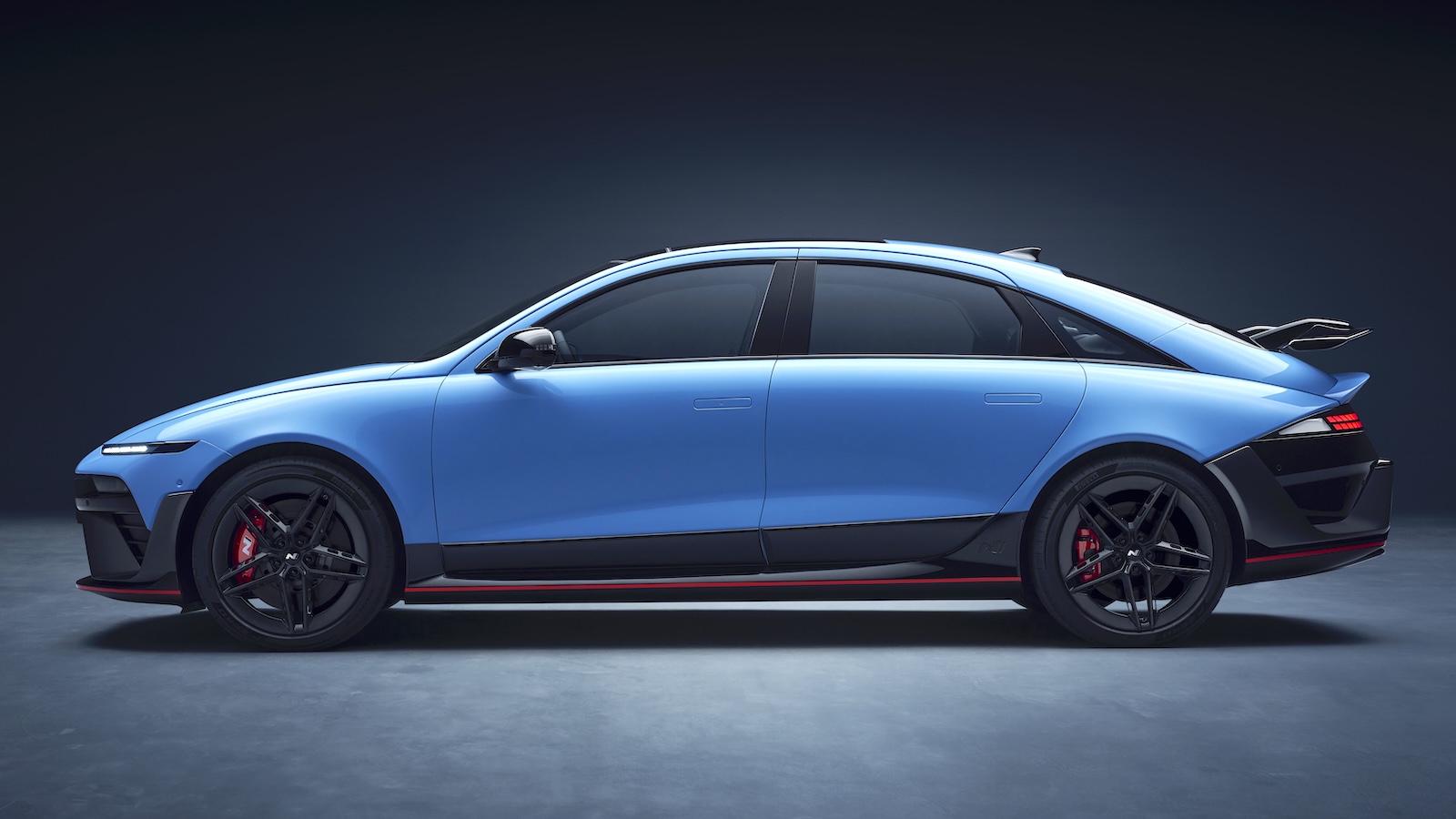
Here’s where things start to get novel: Hyundai has changed the suspension geometry so comprehensively that the Ioniq 6 N now features a different wheelbase from the regular Ioniq 6, stretched by six tenths of an inch. Specially formulated 275-section Pirelli P Zero 5 tires wrapped around 20-inch wheels fill out pumped wheel arches, and there’s a custom tire pressure monitoring mode so you don’t get a warning light when you air down cold pressures at the track.
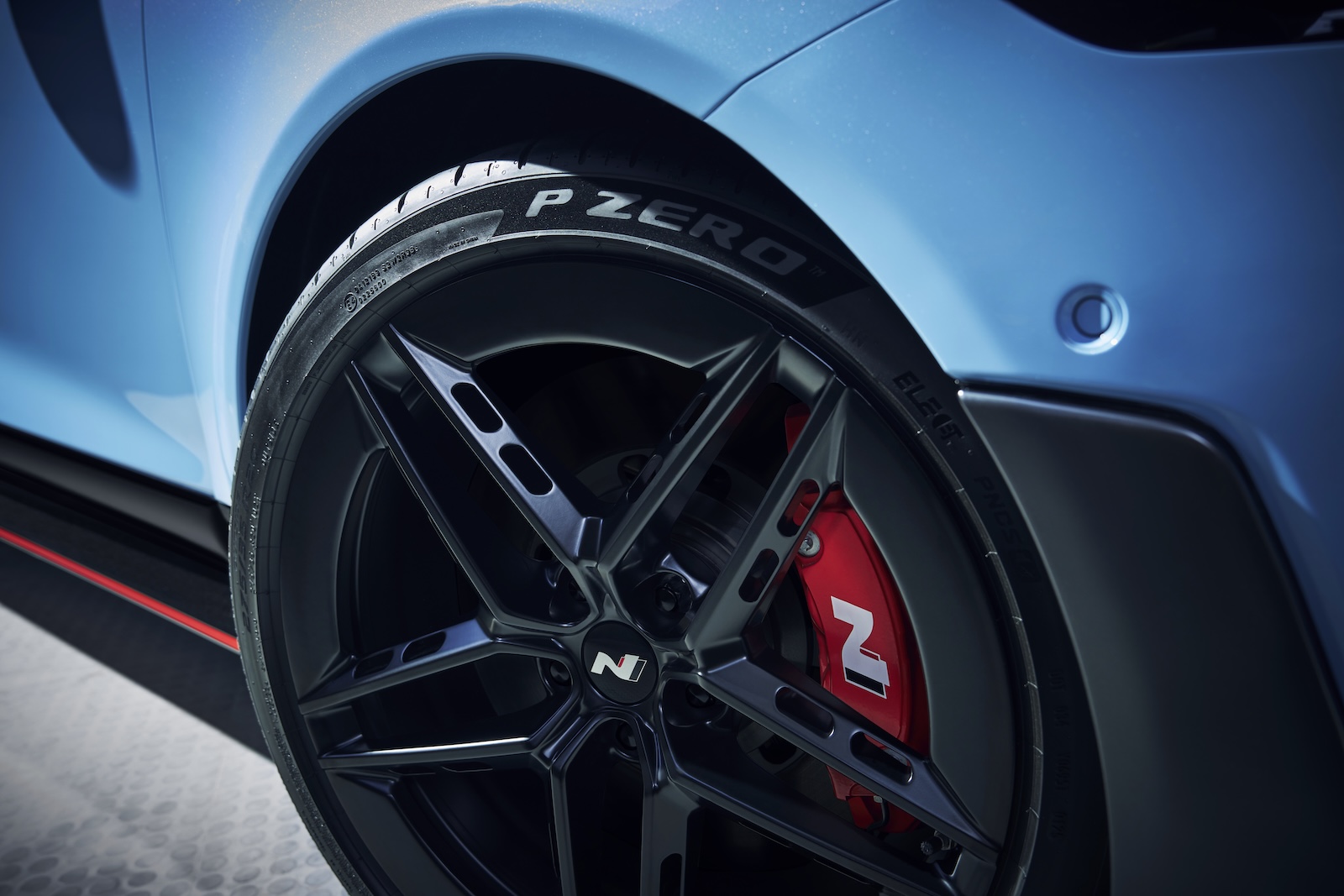
Deep within those arches sit stroke-sensing electronically variable dampers that promise finer control over both sprung and unsprung movement, which should translate to both improved body control and improved comfort over the Ioniq 5 N. Considering Hyundai’s first electric N car controls its mass well without beating you up over pockmarked pavement, I’m excited to experience what an improvement feels like.
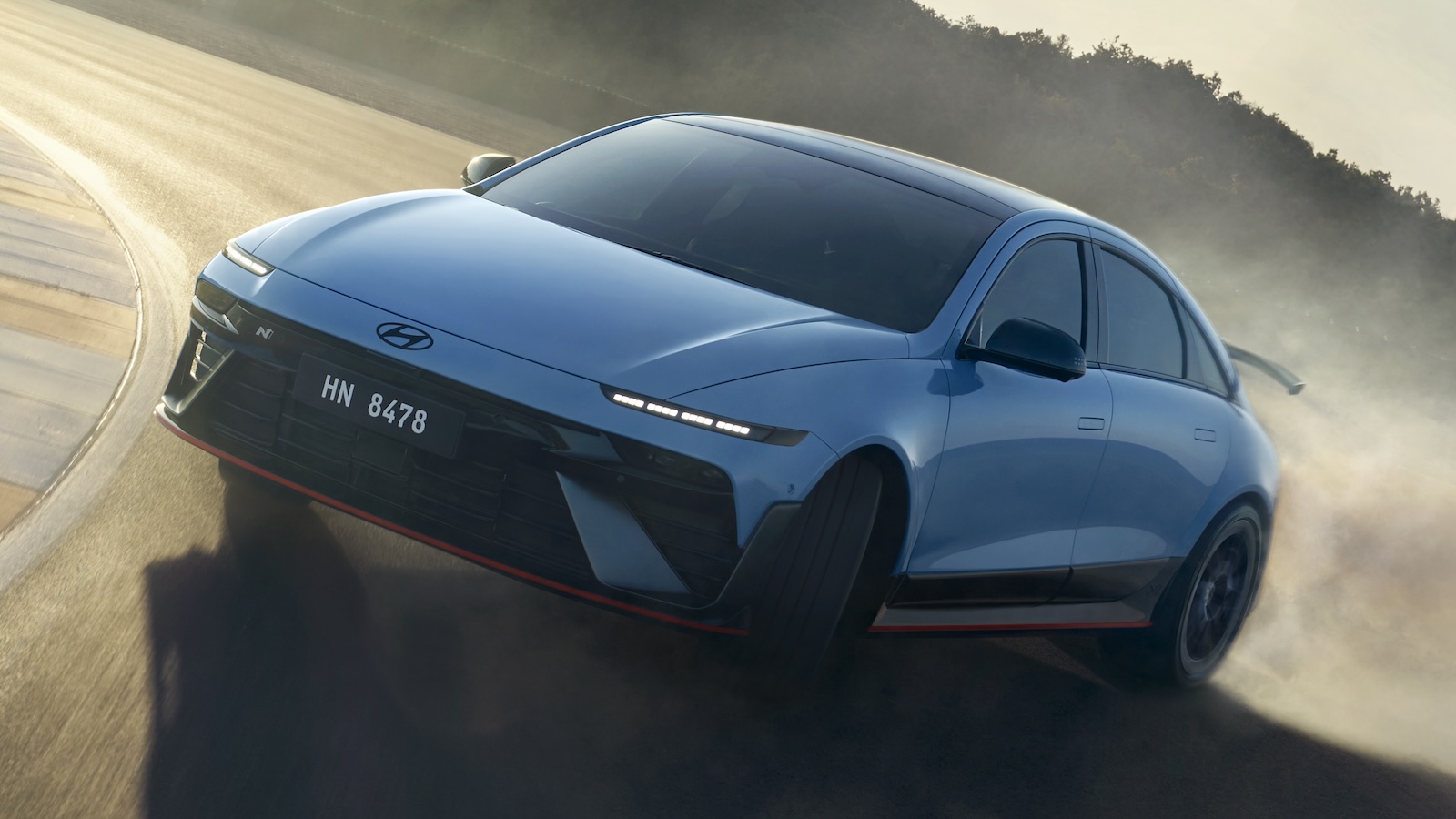
Speaking of improvement, a common complaint with the Ioniq 5 N was the litany of modes that didn’t work with other modes, and the Ioniq 6 N aims to please. The e-Shift simulated manumatic mode is now compatible with launch control, driver-controlled torque distribution, N Grin Boost mode, and the N Drift Optimizer. That last one might be the most important integration because virtual gear ratios should let drivers on closed courses limit wheel speed for greater control over their slides. Speaking of control, the N Drift Optimizer itself has been enhanced from a simple on-off mode to a toolbox with three adjustable parameters: initiation, angle, and wheelspin. Translated into simple English, the Ioniq 6 N should hoon even harder than the Ioniq 5 N.
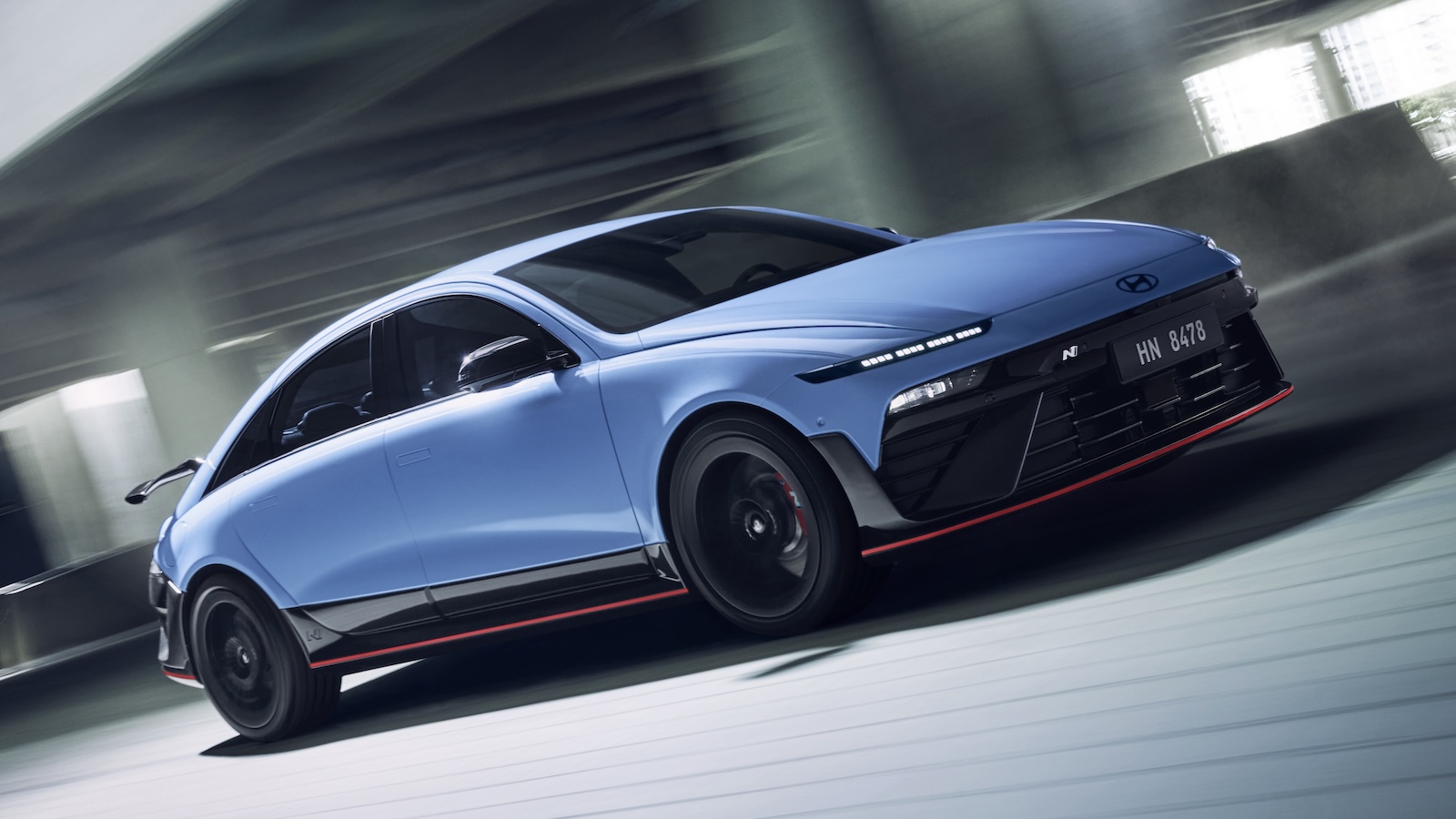
Taking a step back and just looking at the dang thing, the Ioniq 6 N sits 2.4 inches wider than the standard Ioniq 6, and it comes with some beefy add-ons beyond the widened fenders. There’s a swan-neck wing out back that Hyundai claims can generate a sensible 220 pounds of downforce at 155 mph, a chunky set of air curtains and a new front splitter, plus a reshaped rear diffuser to balance drag and downforce. Look even closer, and you’ll see that Hyundai’s added a boatload of pearlescence to its Performance Blue paint, helping it really pop in the sunlight. Not a fan of that hue? There’s always black, white, gloss or matte grey, and an extremely subtle shade of gold if you’re feeling more demure.
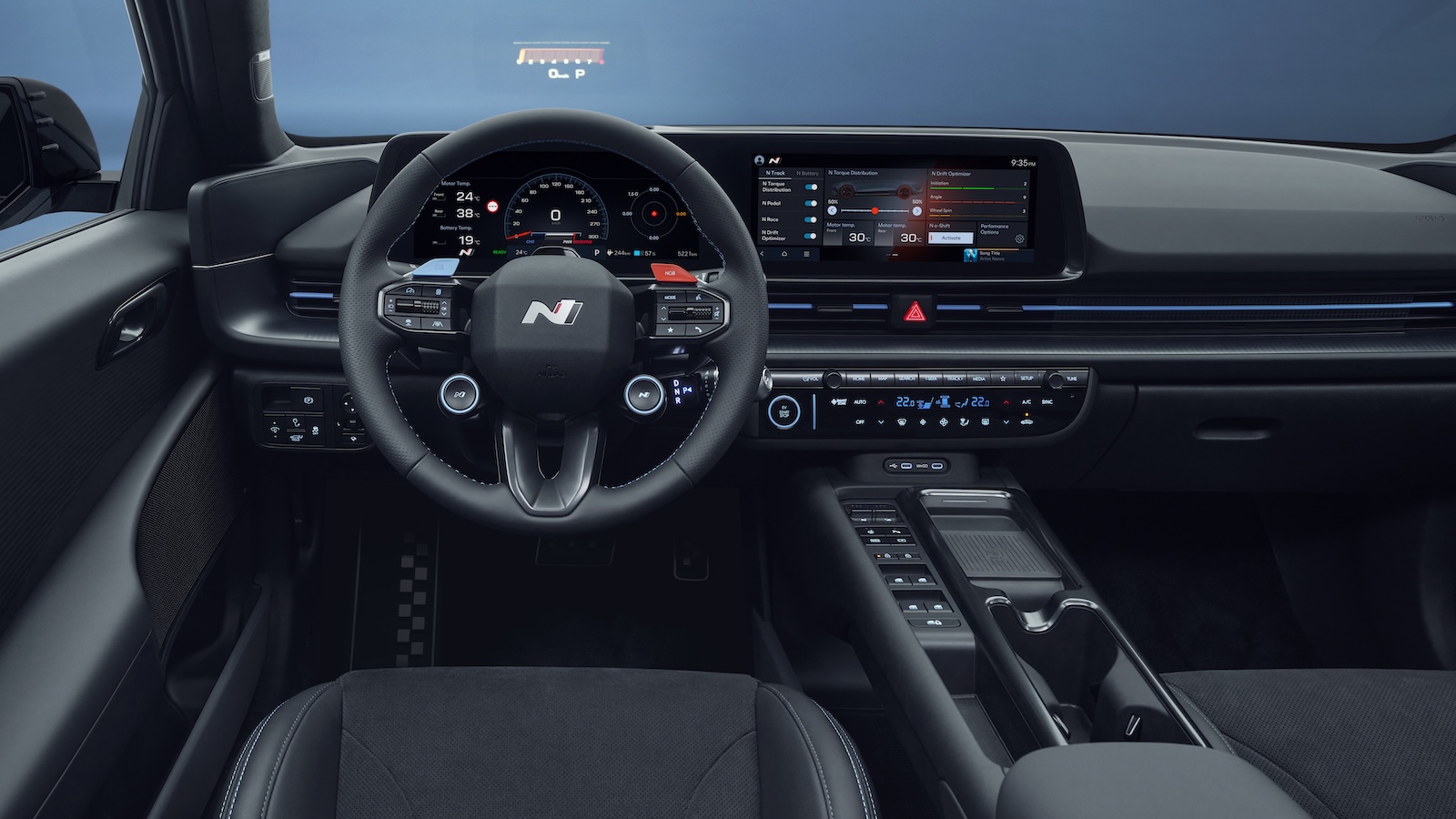
Moving inside the Ioniq 6 N, you still get the mid-century-modern winged dashboard and console-mounted window switches of the regular Ioniq 6, but things have just been punched up a bit. Manually adjustable well-bolstered high-back seats offer tons of support, a dark headliner and blue accents add contrast, and the use of ambient lighting as entire-interior shift lights in simulated manumatic mode adds a further dose of whimsy. A big structural brace behind the rear seat probably isn’t the best news for IKEA runs, but not only does it look great thanks to its red paint, it should stiffen up the bodyshell. Oh, and there’s an action camera mount in the headliner for capturing trackday heroics.
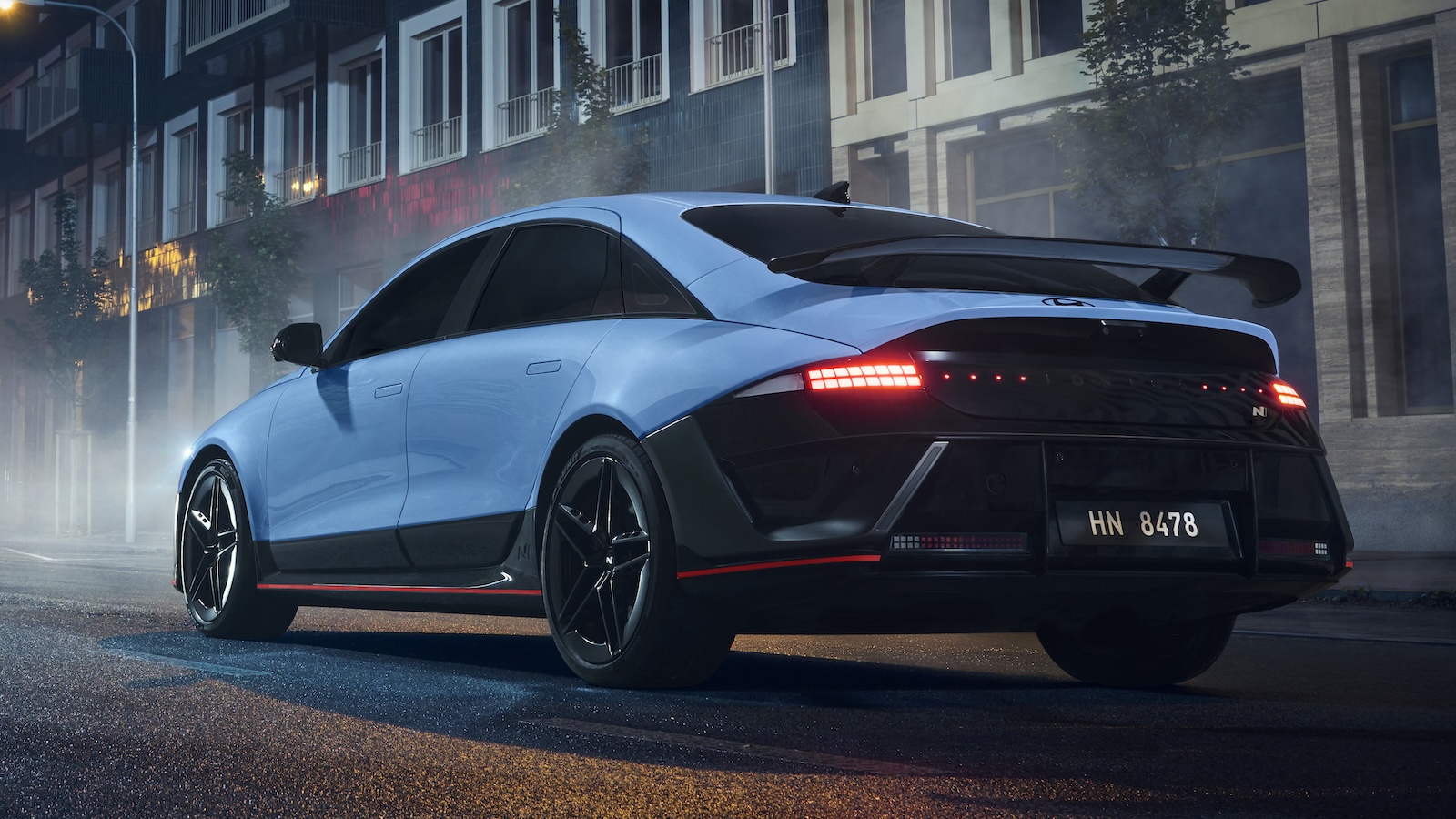
Of course, there are two big question marks around the Hyundai Ioniq 6 N, and those are price and range. I wouldn’t be surprised if it starts in a roughly similar ballpark as the $67,800 Ioniq 5 N, but how far it’ll go on a charge is anyone’s guess right now, beyond the knowledge that the Ioniq 5 N hatchback-crossover-thing can do 221 miles before stopping for juice.
Think of the 2026 Hyundai Ioniq 6 N as version 1.5 of Hyundai’s fast EV philosophy, building on the Ioniq 5 N to give the people more of what they want. I can’t wait to experience it once it hits the streets, especially because the bar from the N division is already set so high.
Top graphic image: Hyundai
Support our mission of championing car culture by becoming an Official Autopian Member.

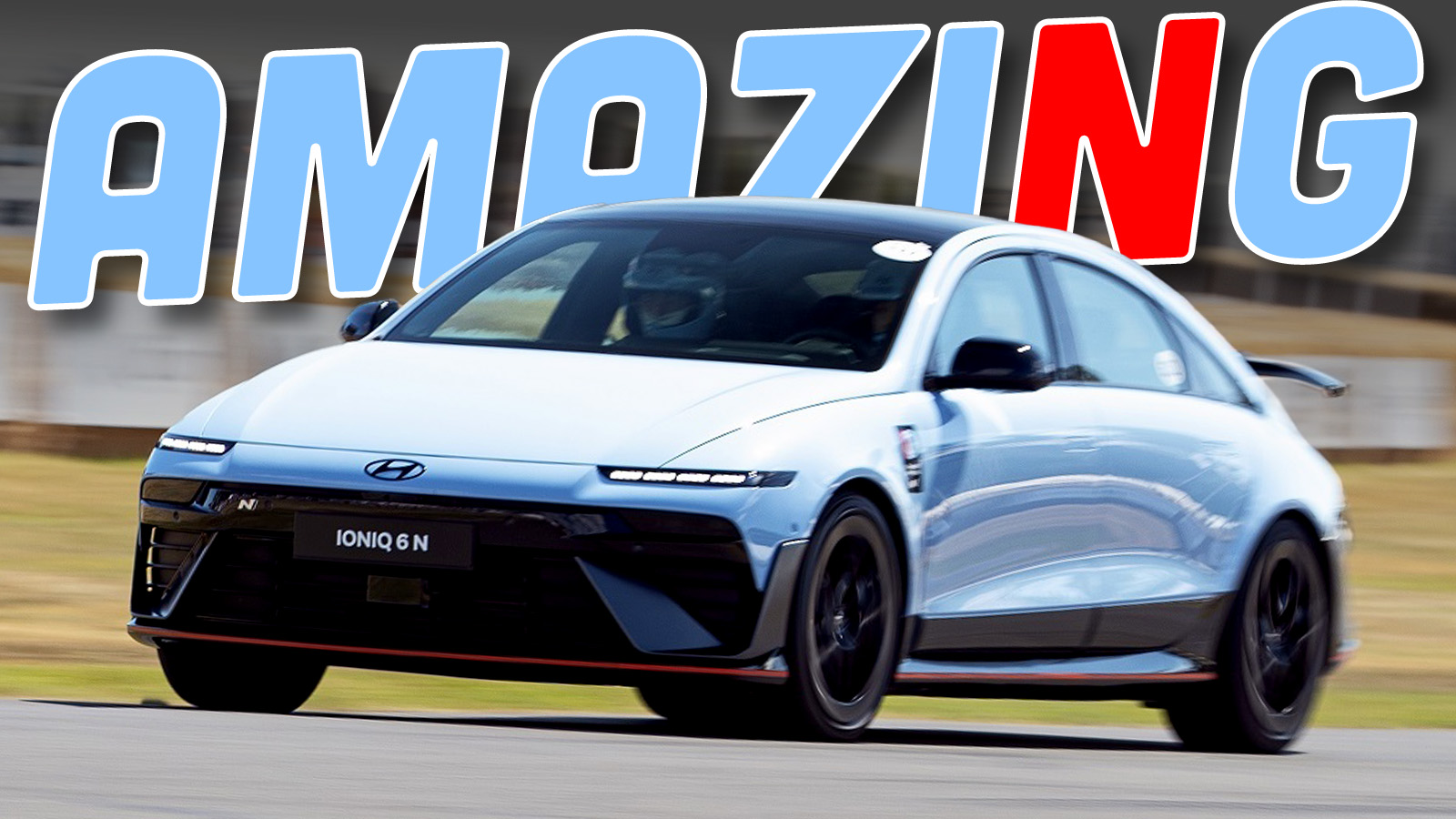







If I could get rid of the rear wing, the N logo on the steering wheel and about $18,000 of its starting price, I would be interested. I don’t drift or otherwise hoon, so those extra driving modes could go to.
It’s very nicely styled and that shade of blue works for me.
Unfortunately, it still looks like a Ford Sierra that melted in the noonday sun.
Do tracks have charging stations now or would you have to trailer this thing to/from the fun times?
There’s a Chevy Volt that races 24hrs of Lemons, and they have to leave the track, and drive down the road to a Walmart to recharge, multiple times per race.
I guess I’ll add this to the ever-growing list of EVs to consider for my next non-project car purchase. I quite like it.
When all the designer had for a stencil was… a banana.
I think this thing looks cool as hell! Way cooler looking vs. a Model 3.
Since I am a fan of Dali! and decades ago acid, this looks just about perfect. As many others here I think the 5 is weirdly cooler, but this slippery as an eel 6 is cool. 3 years till I find a used one.
I don’t understand how the interior is Mid Century. Like… what?
Otherwise, bravo to Hyundai! This is how you create a ‘special’ model. Flared fenders, more performance stuff inside, more performance in the drivetrain, more performance in the suspension, and more exterior detailing. Not really clear on why the wheel base changed??? 6/10ths of an inch is nothing you’d ever notice, so… why? Is the rear suspension trailing arms, lowering the car stretched the wheelbase due to the pivot being further forward??? Would like clarity on that, because I’ve never heard of a company changing a wheelbase other than maybe Audi with the Sport Quattro.
I think they just need to assign some name to it to explain those side fins. I assume those are digital side mirrors in non-us markets.
I just finished an article in Grassroots Motorsports where they entered a 5N in One Lap of America, and did quite well.
I dig it and I’m not gonna be mad at a manufacturer for making silly version of a car. But is this really possible to use as a track car? Most of the tracks I’ve been to, you’re lucky to have access to 120v, let alone fast charge infrastructure to actually get the track time you paid for.
see above comment. GRM did One Lap of America and had no issues with battery life.
From that article: “Is the Ioniq 5 N a viable track day car? Based on our experiences so far, the answer is yes, assuming you have access to reliable charging infrastructure nearby.”
The charging is my point. I’m surprised at only 30% battery usage per session, but that gets you 3 sessions max. And god help you if, like me, you have to drive your car to the track as well.
Eh, that sounds about right if you do a track day in a rotary too. Any track with a longer straight will require filing up after 3 sessions or so
It really depends on the track. The nearest 150kW+ charger to Laguna Seca is an EA station with 4 350kW chargers about 14 miles away. If you took an hour lunch break at 10% you could make it there, charge for 20ish minutes and make it back with a little under 80% charge. An extra 30 minutes gets you to 100%.
Not super convenient, but doable.
Yeah that’s not bad, I’m just jealous haha. At my “local” track there’s not even power outlets let alone EV chargers, but there are indeed other chargers semi-close by. So provided they’re working, I could probably do the same.
Did you watch the pathetic donut attempts made in one during the Goodwood Festival of Speed?
I didn’t see that, but I did watch a test driver for another company practice donuts in their demo car the week before.
Here I am, former semi-pro drifter, wondering how someone who can drive so much better than me manages to make doing skids seem so hard.
Next time anyone takes pictures of the Ioniq 6, please set the shutter to 1/4 second or higher, or just show pics of the interior.
As fast as it is, it can’t outrun the fact that it looks like Salvador Dali’s acid-bender take on a cheap Chinese knockoff of the Mercedes CLA, but inspired by a bar of Dove. The soap, not the chocolate.
“Oh you said banana for scale? I thought you said banana for design.” -designer of Ionic 6 probably
“How about the box the bananas came in?”
“We already have the Ioniq 5”
(which I love, incidentally. Hard to believe these are from the same company, in the same EV lineup, at the same time. I think one might be adopted)
Hyundai’s mailman is a banana.
Overall, I like it, but the whole rear bumper being black instead of following the feature line from the rear door makes it look like it got rear-ended and they threw an unpainted bumper on it.
Hard disagree – I actually like it
I’m anxiously awaiting range figures and charging information. The Ioniq 5 N is neat, but the 221 miles of the that hover around 200ish or less in the real world make it a very hard sell. Hyundai also gave all of its EVs an NACS port for 2025…EXCEPT the Ioniq 5 N.
Seeing as this is considerably more slippery and they’ve had a few years to continue developing the powertrain, the 6 N is almost certainly going to go further…the question is how much. And hopefully they’re going to give it the proper charge port this time. If it gets to the other side of 250 and can use Mecha Hitler’s superchargers it’s going to be a very appealing product. I’d definitely at least test drive one.
I have heard of people swapping the smaller wheels and tires from a regular I5 onto their N versions for daily use and getting range much closer to what the regular AWD I5 gets. I’ll guess you could do the same thing to the I6N and get a pretty substantial range boost as well.
Interesting, good to know.
Put even smaller tires on for even MORE range!
I’m not seeing a ton of clearance around the front brake caliper but the wheel design could be a bit deceptive, hard to tell.
If you’re somewhere cold, knock a solid 30% off that range in the winter. That’s what I got with my non-N Ioniq. It never became a problem for my usage, but it doesn’t allow much headroom for crawling home in a snow storm if you didn’t plug it in last night.
My main concern with the Kia/Hyundai EV’s is their on going ICCU issues